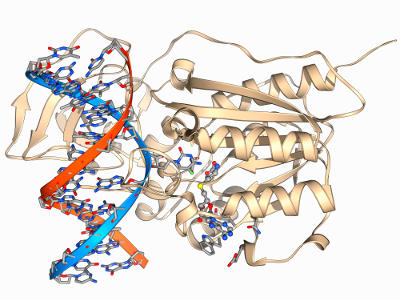Using AI to control energy for indoor agriculture
30 September 2024
Published online 30 May 2017
Scientists opine on a new stem cell therapy for some epigenetic diseases.

© Laguna Design/ Science Photo Library/ Getty Images
Epigenetic information dictates how our genetic code is read.
The tool induces the addition of a methyl group to cytosine-guanine nucleotide sequences on genes, where the lack of this methyl group has led to abnormal gene expression1.
“Rewriting epigenetic markers is definitely a capability that many people are seeking, because it will give us another powerful way to control cell fate,” says Bo Huang, associate professor of pharmaceutical chemistry at the University of California, USA. Huang is independent of this research.
As other labs experiment with technologies based on a nuclease-deactivated form of Cas9 protein to target the DNA, this lab’s approach simply replaces the DNA itself, explains Huang. “Because this method is actually purely DNA editing, any developments in gene editing for animals will equally benefit this method,” he adds.
Researchers developed the tool by studying regions on genes that have a particularly large number of cytosine-guanine sequences. These regions, called CpG islands (CGIs), are predominantly unmethylated, unlike most cytosine-guanine dinucleotides in the genome.
The team, which included researchers from King Abdullah University of Science and Technology in Saudi Arabia, wanted to understand how CGIs were protected from methylation to learn how to induce it in targeted CGIs.
By inducing methylation in a DNA repair gene, the scientists simulated a cancer-related epimutation – abnormal gene expression patterns - adding to the understanding of how abnormal DNA methylation is associated with cancer.
They then used this technology to correct aberrant DNA methylation in stem cells derived from patients with Angelman syndrome, a genetic disorder with severe developmental delay.
“By using our technology, we can correct epigenetic disorders in patient-specific induced pluripotent stem cells (iPSCs),” says Juan Carlos Izpisua Belmonte of Salk Institute’s Gene Expression Laboratory in the US. “The epigenome-corrected iPSCs can be a potential cell source for cell replacement therapies.”
The findings not only provide new insights into epigenome editing technologies, but also help in understanding how CpG islands remain unmethylated in the highly methylated mammalian genome, he says.
The team says they plan to use their tool in live animal models to better understand the biological processes associated with DNA methylation. Mo Li, principal investigator of the study, also says he hopes to use similar tools as a way to tune gene expression levels up or down in pluripotent stem cells to better “coax” them into therapeutically useful cell types, such as haematopoietic stem cells and red blood cells.
“This work is a start toward inducing changes in the epigenome, but modifying the epigenome with the same degree of precision that we have to modify the genome is still beyond our reach,” comments Jeanne F. Loring, professor and director of the center for regenerative medicine at the Scripps Research Institute.
Loring, who was not involved in this study, says that their approach is “clever” but that “targeting the genome or epigenome in vivo is an entirely different challenge than doing so in cultured cells. For human medicine, there is still the problem of delivering the inducing factors to the right cells.”
Pakinam Amer in Cairo contributed to this report.
doi:10.1038/nmiddleeast.2017.97
Stay connected: